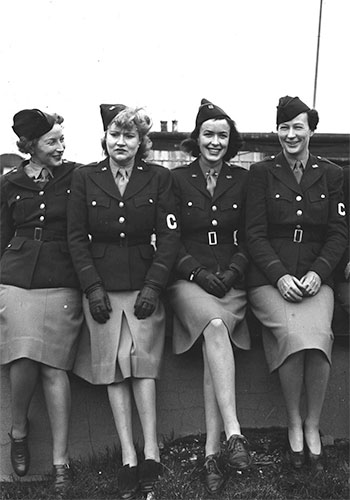Toni Frissell began her career as a high-fashion photographer taking portraits of the famous and powerful. She volunteered for the American Red Cross during World War II and took thousands of photos of nurses, frontline soldiers, WACs (Women’s Army Corps), African American airmen, and orphaned children. Frissell's move from fashion photography into war reporting shared similar desires of earlier generations of newswomen to move from "soft news" like fashion and society pages into the "hard news" of the front page.
Directions
Read the letter from the War Department to photojournalist Toni Frissell and respond to the questions in the box below.
Media Focus Shifted at War's End. Letter from Lieutenant Colonel Harold Rorke to Toni Frissell, May 1, 1945. Library of Congress
Questions
Annotate this Image
Below is a photograph of a group of Tuskegee airmen attending a briefing. At the time, the US armed forces were strictly segregated, though African Americans performed the same duties as white servicemen.
Directions: Take a look at the photograph, using the magnifier to help you. Then use the annotation tool to take notes on the following questions:
- What do you notice first?
- Describe some of the facial expressions on the men.
- The caption reads: “Members of the Army Air Force 332nd Fighter Group in a briefing room, Ramitelli, Italy.” Why do you think Frissell took this photograph?
- What do you think is going through the minds of the men?
- What might this photo indicate about the subject of Frissell’s other photos?
Download the notes to share with your class.
Source: Members of the Army Air Force 332nd Fighter Group in a briefing room, Ramitelli, Italy. Photo by Toni Frissell. Library of Congress
Use the toggle button above to switch to Magnify Mode. Magnify mode will help you see finer detail in the image.
Switch back to Annotate Mode to create your annotations with click and drag.

Your Annotations





